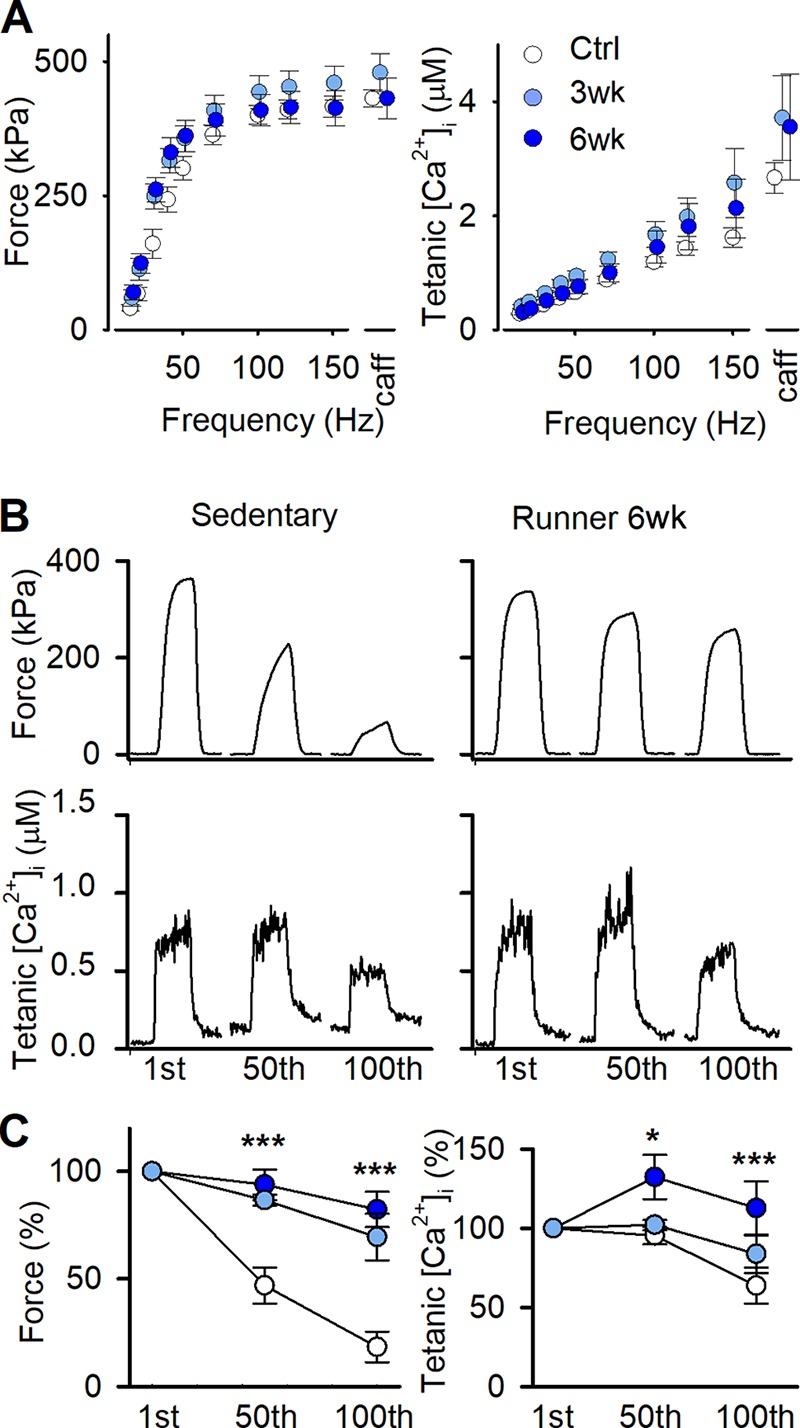Figure 4.

Dissected single FDB fibers are more fatigue resistant after 3 and 6 wk of voluntary running. (A) Mean (± SEM) force (left) and [Ca2+]i (right) against stimulation frequency in individual FDB fibers of control mice with locked wheels (Ctrl; open circles), and mice running for 3 wk (3wk; light blue circles) and 6 wk (6wk; dark blue circles). Tetani at 150 Hz were also produced in the presence of 5 mM caffeine (caff) to assess maximum force generating capacity and total SR Ca2+ content (n = 17, 9, and 6 fibers from 10, 5, and 5 mice, respectively). (B) Representative force and [Ca2+]i records of the 1st, 50th, and 100th fatiguing tetanic contractions (70-Hz, 350-ms tetani given every 2 s) of individual FDB fibers from control (left) and 6-wk running (right) mice. (C) Mean (± SEM) relative tetanic force (left) and [Ca2+]i (right) during fatiguing 70-Hz, 350-ms tetani given every 2 s (n = 17, 9, and 6 fibers from 10, 5, and 5 mice for control 3 wk, and 6 wk, respectively). *, P < 0.05; ***, P < 0.001 50th or 100th contraction vs. first contraction with one-way ANOVA.
